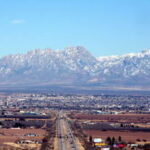How many Americans know that they owe thanks to Native Americans for one of their favorite food items, the steak? When the kids ask for corn flakes, do their parents realize that they are following a tradition first established by the Pilgrims? Where, exactly, did one of the foods, used to celebrate Kwanza and African heritage, originate? What Native American food did Captain Cook feed his crew that nearly caused a mutiny?
Along the coast of North America, as Colonists established themselves, they began to interact with the native population, and learned new ways for doing old things. Colonial tradition, for example, required meat to be roasted on a spit, or cooked in a pot hung in a fireplace in the kitchen. Native Americans, on the other hand, cooked meat on a horizontal frame, which was placed over an open fire. Colonists soon adopted this style of cooking, using a wooden stool, turned upside down, on which meat was perched above the flame of the fireplace. The advantage to the frame was that smaller pieces of meat could be easily cooked. Spit cooking had been primarily used for whole animals, such as cows or pigs, with smaller pieces of the spit-cooked meat used in pot creations. The horizontal frame and a love of beef, combined with inspiration, soon created the Colonial “stake”, a small piece of beef cooked atop the bottom of a stool.
Another Native American tradition involved popcorn, small ears of a particular strain of corn. In order to cook the popcorn, a hollow log with a hole in it was filled with ears of the corn and set on fire. As the heat reached the ears, popcorn erupted from the opening in the log. Native Americans shared this knowledge with a newly-arrived group of hungry strangers, known as the Pilgrims, who saved each batch of popcorn that they produced, rationing it for use as a breakfast staple. The Pilgrims started each day with a bowl of popcorn, onto which milk was poured, a tradition which would pave the way for a later generation’s innovation, the corn flake.
There is no reference to corn in any of the ancient languages of those who populated the eastern side of the Atlantic. First cultivated in Central America, corn was widely grown throughout North America, South America, and Central America, and already developed into the strains that are used today, long before Europeans first stepped upon New World shores. Not a food which originated in, or was even known long ago, in Africa, the use of corn, as an expression of African heritage in the Kwanza celebration, is misinformed, especially since the diversity of Native American varieties included corn with white, yellow, red, blue, pink, black, and brown seeds.
Vitamins had not yet been discovered during the Colonial period, and vitamin deficiencies often went unrecognized. Cures for scurvy, which we now know is caused by an extreme lack of vitamin C, along with other dietary ailments, often relied upon the Native American prescriptive practice of ingesting large quantities of wild and pungent onions, a rich, natural source of vitamin C. During his famous voyage to chart the South Pacific, Captain Cook stopped for supplies along the coast of the Americas, purchasing large quantities of onions for his trip. During his time, due to the lack of having very many food types which could be preserved for a long trip, scurvy, a totally debilitating disease, commonly afflicted sailors. Steeped in New World lore, upon sailing, after his onion cargo was safely onboard, the Captain seated his crew at the dinner table, placed three pounds of smelly onions before each man, and ordered them to eat all before leaving the table. The crew almost mutinied, before reconsidering. Cook, his crew, and ship saile







